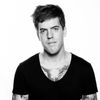QU33R is a new comic anthology from the mind of Ignatz Award-nominated editor Rob Kirby, slated to feature 241 pages of new comics from 33 different contributors. Stemming from the work of a previous anthology titled No Straight Lines: Four Decades of Queer Comics, QU33R aims to take readers on a journey from where the previous book left off: into the future of queer comic culture.
With queer comic book culture becoming increasingly streamlined into the mainstream through events such as BENT-CON, the importance of documenting its history and its future can't be understated. The Huffington Post caught up with QU33R's publisher Charles "Zan" Christensen and editor Rob Kirby to discuss the anthology's Kickstarter campaign, what they hope to accomplish with the project and what they see the anthology itself contributing to a larger conversation surrounding queer comic culture.
How did Q33R come about?
Kirby: QU33R had its genesis in a little all-color queer comic anthology I did from 2010 to 2012 called THREE, each issue of which was comprised of three stories by three creators or groups of creators. Seeking to expand the scope of the project, I approached Zan Christensen of Northwest Press about doing a big collection of contemporary comics and he agreed to publish it. Meanwhile, in 2012 Justin Hall had published No Straight Lines: Four Decades of Queer Comics to great acclaim. I loved that Justin's book shone a light on where we’ve come and felt that QU33R could take the next logical step and make a statement as to the breadth and scope of queer comics in the present day. In particular, it's interesting to see that many of the stories in QU33R are less concerned with basic issues of coming out, etc. and more about looking at issues of gender fluidity and questioning queer identity itself.
How will the anthology be structured?
Kirby: The book is comprised of 34 stories ranging from a 21-page coming of age mini-epic by Eric Orner to shorter and even one-page strips on a wide variety of subject matter. The stories are arranged thematically: there are tales of family relationships, of social dynamics at parties and rock clubs, a suite of comics about ambivalent dating or sexual relationships, another section that addresses depression, grief and letting go, and so on. I purposely went for a looser structure in an effort to create those little serendipitous thematic cycles, and I feel it paid off.
Why is it important to highlight queer visibility within comics?
Christensen: It's been important to me ever since I got back into comics, as an adult reader, to help queer stories be heard. Before my work with Northwest Press, I spent a decade in LGBT comics communities working toward better representation.
For one thing, it's very helpful to younger readers to be able to see people on the page whose lives they can closely identify with. It's similar to the value of LGBT characters on television and in movies; our popular culture can serve as great stand-ins for friends and loved ones from different races, classes, cultures and sexualities. The more different types of people represented in pop culture, the less likely people are to feel alienated, and the less likely people are to be completely intolerant of people different from themselves.
Historically, how has queer culture intersected with comic book culture?
Christensen: There was a long-running tradition of lesbian and gay comics in gay newspapers, which is where I and many people of my generation got our first notion that there could even be gay comics. LGBT papers are not as much of a thriving concern as they were back in the day, but other venues have popped up to provide platforms for people to be heard, like webcomics sites and Tumblr.
I think the do-it-yourself nature of comics lends it very well to exploring queer issues. Many creators write and draw their own work, and often publish it themselves, so if they're inspired to talk about their lives, there are relatively few barriers to getting their stories told.
The underground comics scene in the '70s and '80s, the B&W indie scene in the '90s, and the web comics boom over the past decade have all been fertile ground from which waves of new queer comics creators emerged. You increasingly see these comics tackling topics and characters that are outside what's being done with mainstream queer characters, in TV and movies for instance, because the comics are more immediate and less costly to produce.
In terms of fandom, LGBT fandom has been a thing for the last twenty years, but it's really taken off with the advent of social media tools. Now in addition to groups like Prism Comics, which supports LGBT comics creators, you also have Geeks OUT, Queer Geek!, Bent-Con, Fanboys of the Universe, Yuricon… people have realized that it's fun to geek out over comics with people who "get you" from the start.
I always joke that Comic-Con in San Diego is a queer convention, because there's so many LGBT programs, parties, and talent that it feels like a pride parade.
What do you hope this anthology will accomplish?
Kirby: I wanted to highlight the fine work queer creators are contributing to comics, to the broader queer culture, and perhaps even beyond those realms. I hope that people who enjoy the anthology will continue to explore the work of the artists within and that of other creators -– there are many other artists I would have liked to have included in QU33R but space was already at a premium. I’ve said many times I could have doubled the number of artists and called the book QU66R.
For more information on QU33R, visit the anthology's Kickstarter campaign.
